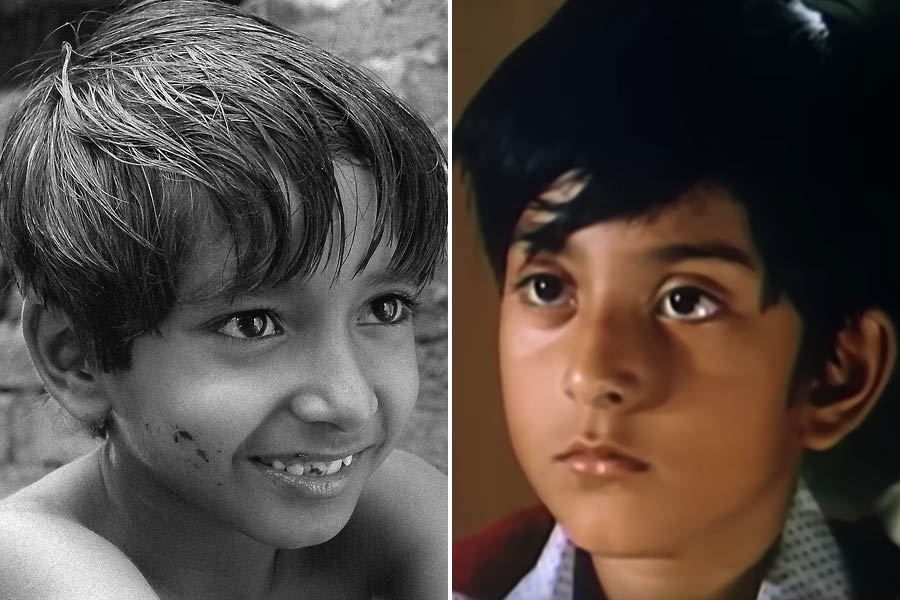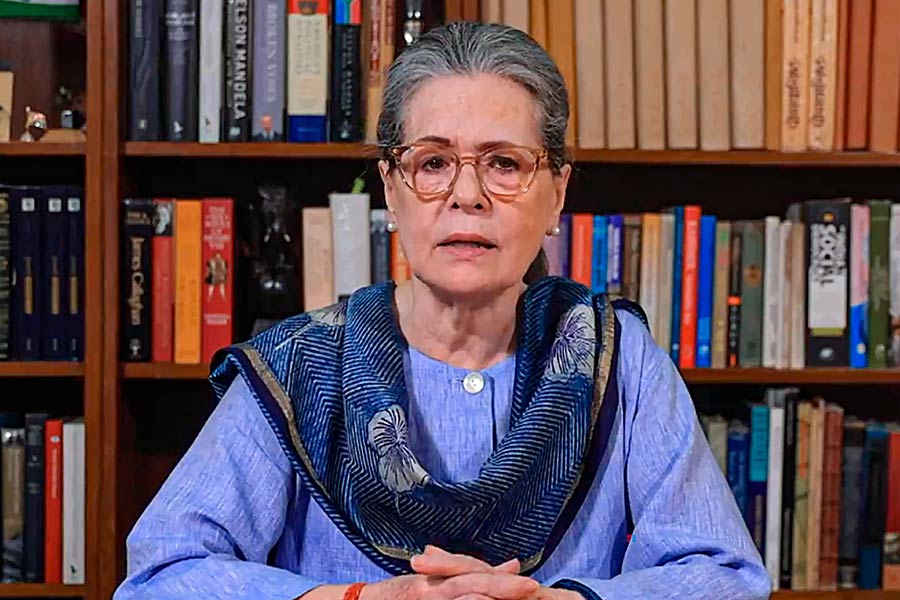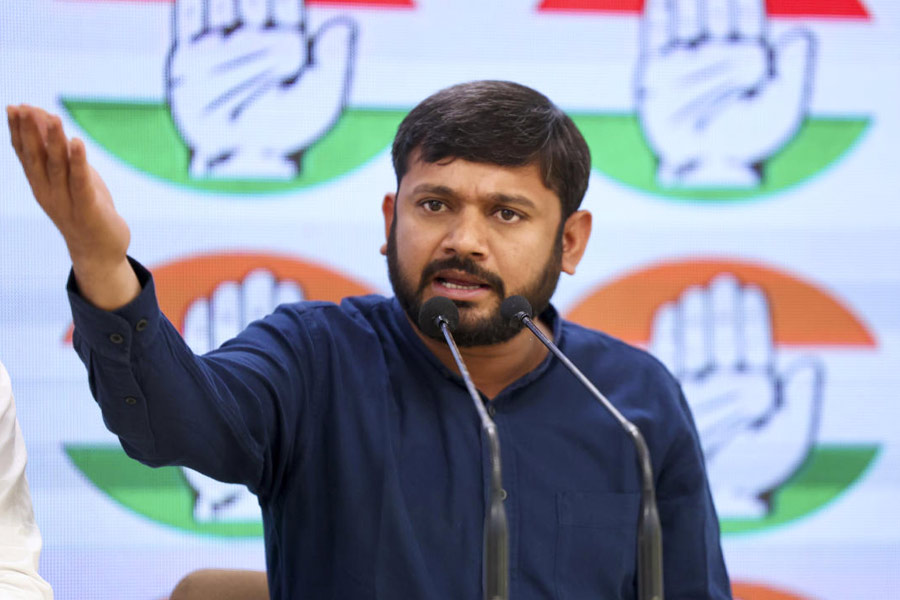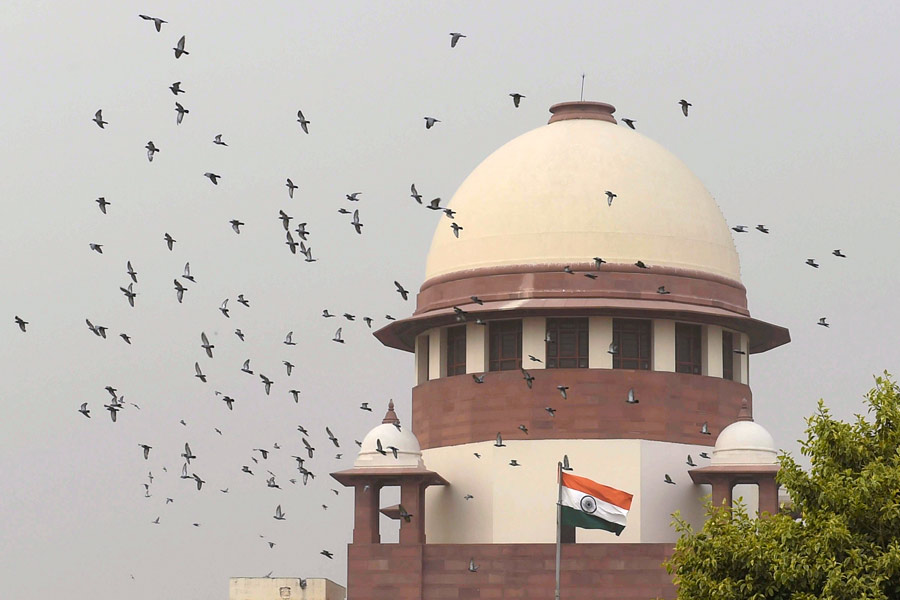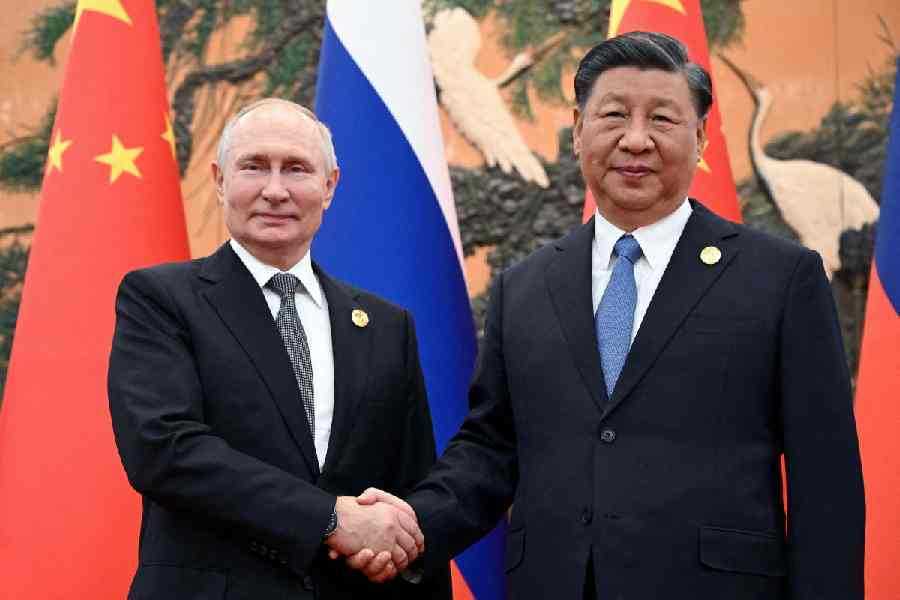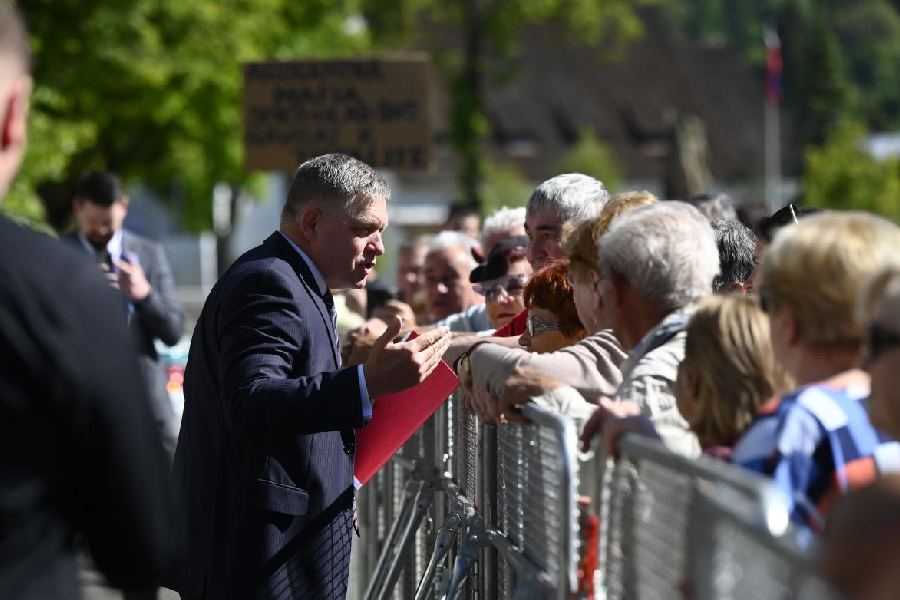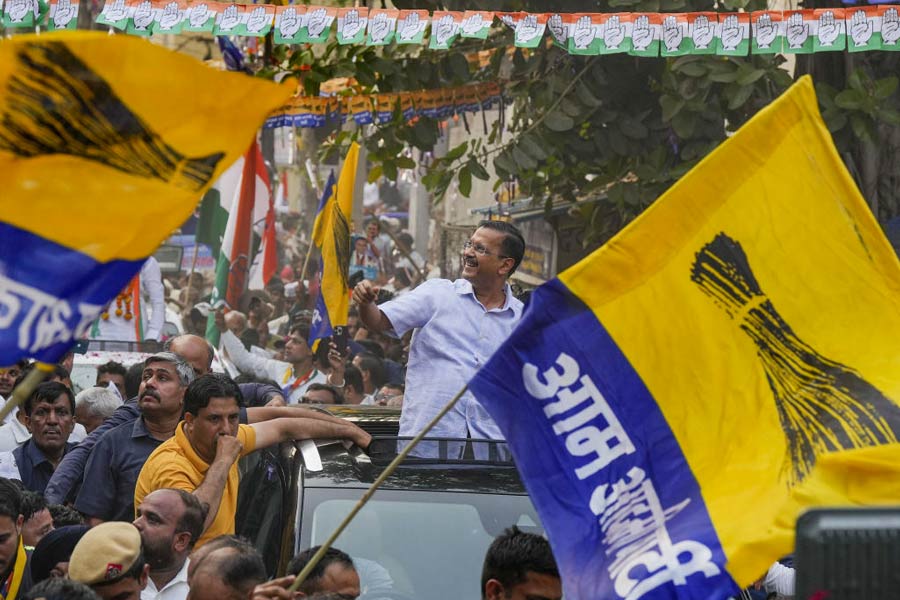‘I never speak loudly to them. I sort of whisper into their ear, so that they think it is something very confidential that’s being communicated and they immediately get interested. It becomes a competition for them to be working with adults, so it’s a challenge for them to be doing just as well as the others are doing.’ – Satyajit Ray on directing children, as told to Andrew Robinson.
‘Aami onek kichhu jani … Tintin aar yeti jaani … Windelbom jaani … ek nombor, du nombor jaani…’ This exchange between a child and his ailing grandfather is by far the best part in what is far from Satyajit Ray’s best work. Though the lyricism and economy that marked his films till the 1970s is missing in Shakha Proshakha, that bit about ‘Tintin, yeti’ and, in particular, ‘Windelbom’ is vintage Ray, showing that when it came to understanding the way a child speaks and behaves, and putting it across onscreen, he had few equals. At least none as far as Indian cinema is concerned.
In a moment typical of the children of his films, Kajal in Apur Sansar retorts in a fit of pique, ‘Baba der ki tiki hoi?’ Apu and Durga running through the kaash fields to catch a glimpse of the train. Aparna, a child-bride, when she first enters Apu’s room on the terrace, looking out of her window, at an infant playing with his mother. Kajal, Apu’s son, his face an unforgettable kaleidoscope of hurt, hope and longing. The tomboyish Mrinmoyee in Samapti who outgrows her squirrel. The proud little orphan girl Ratan who refuses the tip doled out by the new postmaster. The two unnamed children in the eponymous short film Two. The young boy in Pikoo who cannot find the colour white that he needs to colour a flower and instead uses black.… Few directors in cinema anywhere in the world have such a luminous gallery of children lighting up a filmography.
Sharmila Tagore, who has worked in five of his films, says, “Ray was extremely skilful when it came to directing children. I was no more than a child myself in Apur Sansar and I have seen him direct other children. He would sit on a stool, look them in the eye and narrate the scene. He didn’t over-explain, never saying more than the essential – but they got it right every time, giving us a range of extraordinary child characters who are wise and full of wonder.”
The secret was, as Soumitra Chatterjee observed, “He never thought of children as children but gave them as much importance as adults, and mingled with them as though he was one of them. As a result they were quick to make friends with him. He himself never lost the curiosity and wonder of a child.”
Apu and Durga’s first glimpse of a train (Pather Panchali, 1955)
Among the most talked-about sequences of the film, its celebratory mood and its reading as Apu’s first brush with modernity have often obscured a very important aspect to it. Trains in the Apu Trilogy carry with them the presentiment of death. This sequence is informed with that too, placed as it is between two sequences featuring Indir Pishi’s final moments. We have the premonition of death in her interaction with Sarbajaya, before the scene cuts to Durga, chewing on a stalk of sugarcane, listening intently to the humming of the electric pylon.
Durga puts her ear to the pylon, before running off in the kaash field. Apu follows suit, looking for her, worried he is lost. There’s an eerie silence. Finding Durga sitting among the kaash flowers, Apu asks: ‘Where are we?’ They have never ventured this far from home before and are just that bit afraid. Suddenly, Durga puts a hand over Apu’s mouth, asking him to shush. She has heard something – and now we hear that familiar chugging of a train. Both of them get up, look around, and through the kaash flowers we see the train belching smoke. Both of them make a run for it, as the train chugs its way through the field. Durga trips; she will never be able to see a train. The camera pans across the field … Apu reaches the tracks … the train roars away, leaving behind a thick black cloud of smoke settling on the kaash bloom.
Kajal meets his father (Apur Sansar, 1959)
This is of course one of cinema’s most iconic sequences ever. The sight of Kajal on Apu’s shoulders, comparable to the final father-son sequence in Bicycle Thieves, is capable of moving the most hardened heart.
After Aparna’s death at childbirth, Apu has abandoned everything. He has become a vagabond and it is his friend Pulu who tracks him down to a colliery where he has taken a job. Pulu tells Apu about his son Kajal being brought up by his grandfather, devoid of all parental care. Though Apu refuses to go back, saying he has no feelings for his son, he eventually finds himself at Kajal’s grandfather’s place.
His father-in-law tells him that Kajal is unwell, recovering from a fever. Apu approaches Kajal’s bed but cannot bring himself to face him. He sits next to a window looking out to the river where we see a boat. When at last he musters up the courage to call him, Kajal opens his eyes, looks at Apu and runs away.
Apu follows him, calling out, ‘Kajal, I am your father.’ The boy hurls a stone at him. When his grandfather raises a stick to beat him, Apu intervenes. But his efforts at breaking through to Kajal fail. Apu decides to leave. Kajal follows him at a distance. Apu turns back and there takes place one of the most moving exchanges in all of Ray’s filmography, ending with Kajal asking Apu, ‘Who are you?’ and Apu responding, ‘A friend. Will you come with me?’
As Apu whispers conspiratorially to Kajal, ‘Dadu would not come to know’, a bond is established between the two. Kajal runs to Apu who picks him up. The grandfather looks from a distance, smiles, turns back. Apu walks away, Kajal perched on his shoulders.
Ratan finds a new master (Postmaster, 1961)
Chandana Banerjee is arguably the finest child actor in Ray’s gallery. Over the 40-minute span of the film she holds us spellbound. In a telling sequence she points to a photograph of the postmaster with a young girl. When he tells him that it’s his sister who also sings very well, you catch a sudden pang of envy on her face even as she breaks into a song herself. The sequence is mesmerising for what it conveys despite its brevity. When the postmaster asks her about her mother, she simply says, ‘She died,’ before adding, ‘when I was a child.’ It’s the pause between the two parts of the statement that adds to the pathos of the second part and makes it so heart-wrenching.
However, for me the one scene that stands out is the climactic one. Ratan has nursed the postmaster back to health after a serious illness, all along nursing the hope that she is now part of his family. So, when he decides to go back home to the city, she refuses to believe it at first. When the new postmaster arrives, we see her sobbing next to a tree, before stoically gathering herself, and is soon seen serving the new postmaster with the same passive face she had when the film began. When the old postmaster calls out to her to hand over some money, she simply passes him by with a pail of water, without looking up, and walks away, calling out to her Natun Babu.
Ray made the all-important change to Tagore’s original story which had Ratan fall at the feet of the postmaster crying and pleading that he take her with him. Giving Ratan the agency here, in the way she takes the postmaster’s indifference in stride, is a masterstroke that elevates the film to a classic.
The Lepcha boy hums a song (Kanchenjungha, 1962)
Satyajit Ray is a master of the climax. And Kanchenjungha’s is no exception.
We first come across the young urchin at the 25-minute mark when Moni’s suitor Mr Banerjee has just handed over a flower that she has been looking for. For the rest of the film he will try in vain to woo her. The boy is looking at them from a distance and starts following them when they begin to walk. For the rest of the film he will dog their footsteps providing the viewer a perspective on the narrative unfolding without even uttering a word. Neither Mr Banerjee nor Moni are aware of him.
We see him again at the 100-minute mark at a crucial moment in the film. The mist is just beginning to shroud everything in its wake. The characters – all barring the smug patriarch – are negotiating their personal demons. Mr Banerjee is in the throes of great passion with a visibly uneasy Moni who wants to get away from it all. The young boy is not far away and makes a face. Under the cover of the gathering mist, Moni makes her getaway and hides from Mr Banerjee who is calling out to her.
Then comes the climactic punch. Mr Banerjee is having his final say with Moni, setting her free. The boy is watching from a distance, a kite spool in his hand. As Mr Banerjee walks away, the boy runs up to him. For the first time you hear him ask for money. Mr Banerjee pauses, reaches into his pocket and comes up with a chocolate. He hands it over to the boy, saying, ‘Take this. You win.’ The boy smiles. It is enough to light the town, as it indeed does – the mist has now cleared up.
In the next sequence, we see the boy’s mouth smudged with chocolate. He is humming the catchy folk number, which echoes through the landscape as we finally get a glimpse of the majestic Kanchenjungha.
Mukul does not want to smile (Sonar Kella, 1974)
Have you ever asked a child to smile for the camera only to be rebuffed by him because he is not in the mood to smile? That’s exactly what we see in the first sequence of Sonar Kella – a film brimming over with one memorable sequence after another – post its opening credits. A newspaper man and his photographer (Ray’s photographer Nemai Ghosh in a cameo) are interviewing Mukul. As the interview ends, the photographer asks him to smile for the camera. He responds: ‘Why?’ The photographer insists and adds that one looks good smiling in a photograph. The boy, sombre as ever, snaps back: ‘Amaar hashi pachhe na.’ (I don’t feel like smiling.) It’s as natural as can be and you cannot help smiling at how Ray has it spot on.
(Shantanu Ray Chaudhuri is a film and music buff, editor, publisher, film critic and writer.)

